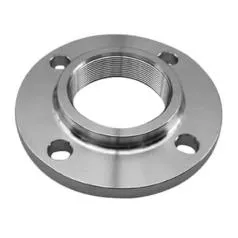-
Cangzhou Yulong Steel Co., Ltd.
-
Phone:
+86 13303177267 -
Email:
admin@ylsteelfittings.com

Nov . 24, 2024 05:32 Back to list
swage concentric reducer
Understanding Swage Concentric Reducers
In the world of piping systems and fluid transport, swage concentric reducers play a crucial role in maintaining efficient flow while connecting pipes of differing diameters. These fittings, often made from materials such as stainless steel, carbon steel, or PVC, are predominantly utilized in various industries including oil and gas, water treatment, and chemical processing.
A swage concentric reducer functions by gradually reducing the diameter of a pipe, allowing for a smooth transition from one size to another. This design is vital for minimizing turbulence and pressure drops as fluids flow through the system. The concentric shape ensures that the inner walls of the reducer align with those of the connecting pipes, maintaining a balanced flow path. This characteristic is particularly beneficial in applications where space is limited and where the flow must remain uninterrupted.
The manufacturing process of swage concentric reducers typically involves techniques such as forging, welding, or machining, ensuring high strength and durability. The choice of material is crucial; for instance, stainless steel reducers are preferred in corrosive environments while carbon steel is favored for its strength in high-pressure applications. Additionally, reducers can be custom manufactured to meet specific pressure ratings and dimensions required by unique projects.
swage concentric reducer

Installation of a swage concentric reducer is relatively straightforward, but it requires precision to ensure that all components fit seamlessly. Proper fitting is essential not only for performance but also for safety, especially in high-pressure systems. It is also important to consider the compatibility of the reducer with the existing piping system to prevent leaks and ensure integrity.
Furthermore, maintenance is a key aspect of sustaining the efficiency of piping systems. Regular inspections for signs of wear, corrosion, or pressure changes can help identify potential issues before they lead to significant system failures.
In conclusion, swage concentric reducers are integral components in fluid transport systems, providing a reliable means of transitioning between pipe sizes while promoting smooth, efficient flow. Their robust construction and thoughtful design make them invaluable in a wide array of applications, underscoring the importance of quality materials and proper installation practices. As industries evolve, so too will the designs and applications of these essential fittings, ensuring they continue to meet the demands of modern engineering.
Latest news
-
ANSI 150P SS304 SO FLANGE
NewsFeb.14,2025
-
ASTM A333GR6 STEEL PIPE
NewsJan.20,2025
-
ANSI B16.5 WELDING NECK FLANGE
NewsJan.15,2026
-
ANSI B16.5 SLIP-ON FLANGE
NewsApr.19,2024
-
DIN86044 PLATE FLANGE
NewsApr.19,2024
-
DIN2527 BLIND FLANGE
NewsApr.12,2024
-
JIS B2311 Butt-Welding Fittings LR/SR 45°/90° /180°Seamless/Weld
NewsApr.23,2024
-
DIN2605-2617 Butt-Welding Fittings LR/SR 45°/90°/180° Seamless/Weld
NewsApr.23,2024











